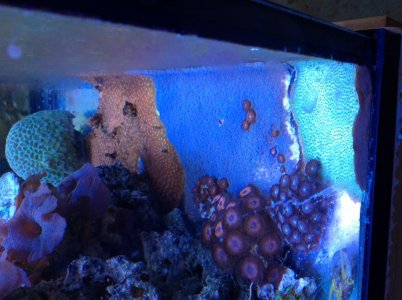Nano sapiens
New member
SSB (~1"), if regularly vacuumed, is what I prefer. But if I were to go without a true SB, I'd still like the look of a sand bottom. One solution to accomplish this is to take a 1/4 or 3/8" thick (preferably white) acrylic sheet the size of the tank bottom (or two sheets side-by-side to cover the bottom of a large tank), cover the top surface and sides thinly with tank safe silicone and thoroughly sprinkle/pat on the sand or gravel of your choice. Let sit for 48 hrs, shake off the excess sand and you've got a bottom surface of sand which can be easily cleared of detritus just like a BB. For a more natural, wavy look just vary the thickness of silicone applied to various places on the top surface and then let dry a few days longer to make sure it cures thoroughly.

